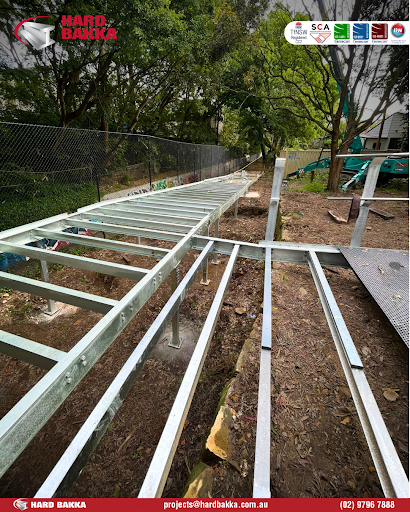Hard Bakka Latest News
Fabrication of Structural Steel: A Comprehensive Guide
Fabrication of Structural Steel: Key Processes and Benefits
The fabrication of structural steel is a crucial aspect of modern construction, providing the backbone for numerous buildings, bridges, and other infrastructures. In this section, we will explore the primary stages of steel fabrication, the different types of fabricated steel components, and the materials and techniques used in this intricate process.
- Importance: Structural steel is known for its strength, durability, and flexibility, making it an ideal choice for large-scale construction projects.
- Benefits: Properly fabricated steel components allow for faster assembly on-site, enhancing construction efficiency and reducing project timelines.
Key Processes in Fabrication of Structural Steel
The fabrication of structural steel encompasses several critical steps to ensure high-quality outcomes:
Cutting: Precision and Techniques:
Steel plates and beams are cut to precise dimensions using methods such as shearing, plasma cutting, or laser cutting.
Welding: Methods and Applications:
Steel components are joined together through various welding techniques, including MIG (Metal Inert Gas), TIG (Tungsten Inert Gas), and Stick welding.
Assembly: Bringing Components Together:
The cut and welded steel parts are assembled into structural configurations as per engineering drawings and specifications.
Coating and Finishing: Ensuring Longevity:
Protective coatings are applied to steel surfaces to guard against corrosion and enhance their longevity.
Types of Fabricated Structural Steel
Different types of structural steel fabrication cater to diverse structural needs:
- Beam Fabrication: Beams support loads in structures and are fabricated to specific lengths and configurations.
- Column Fabrication Columns provide vertical support and are designed to handle compressive forces.
- Plate Fabrication: Steel plates are used in various applications, including floors and walls.
- Custom Shapes and Designs: Fabrication can also include fabricating custom steel components to meet unique project specifications.
Materials Used in Fabrication of Structural Steel
- Carbon Steel: This versatile and strong material is frequently used in structural applications.
- Alloy Steel: Enhanced with elements like chromium or nickel, alloy steel offers improved performance for certain applications.
- Stainless Steel: Known for its corrosion resistance, stainless steel is suitable for environments exposed to moisture or chemicals.
- Selection Criteria: Factors such as strength requirements, environmental conditions, and cost influence the choice of steel material.
The Role of CAD in Fabrication of Structural Steel
Computer-Aided Design (CAD) plays a significant role in the fabrication of structural steel:
- Importance: CAD software allows for precise design and visualization of steel components before the fabrication process begins.
- Accuracy and Efficiency: CAD improves measurement accuracy and streamlines the fabrication process by generating detailed fabrication drawings and 3D models.
- Examples of CAD Applications in Steel Fabrication:
CAD tools are used to develop detailed blueprints, simulate assembly processes, and optimize designs.
Fabrication Techniques and Equipment
Effective steel fabrication involves various techniques and equipment:
- Cutting Methods: Techniques like shearing, plasma cutting, and laser cutting are employed to achieve precise cuts.
- Welding Techniques: Welding methods such as MIG, TIG, and Stick welding are used to join steel components securely.
- Machinery and Tools: Essential equipment includes cutting machines, welding machines, and fabrication jigs that facilitate accurate and efficient steel fabrication.
Quality Control in Fabrication of Structural Steel
Ensuring high quality in the fabrication of structural steel is crucial:
- Importance: Quality control ensures that fabricated steel components meet design specifications and safety standards.
- Inspection Procedures: Regular inspections are performed to identify defects and ensure compliance with quality standards.
- Standards and Certifications Adhering to standards and certifications, such as those from the American Institute of Steel Construction (AISC), guides the quality control process.
Challenges in Fabrication of Structural Steel
- Common Issues: Material defects, measurement accuracy, and complex design requirements.
- Strategies to Overcome: Implementing stringent quality control measures and utilizing advanced fabrication technologies can help address these challenges.
- Metal and Steel Supply
- Importance of Steel Fabrication
- Experienced Steel Fabricator
Link:

Get in Touch and Let Us Handle the Toughest Metalwork for You
Hard Bakka Steel Fabrication is a company with a 30-year tradition. We pride ourselves on reliable, world-class service. We appreciate the fact that serious projects require serious efforts, and always achieve stellar results, thanks to our experience.
We have done metalwork in Condel Park, profile cutting in Greenacre, shop fit-outs in Revesby, steel bending in Bankstown, steel fabrication in Liverpool, Preston and Sydney, steel welding in Moorebank, structural steel in Bankstown, and structural steel fabrication in Sydney. We will do anything, anywhere in NSW to cater to your needs. Your satisfaction is guaranteed!



